You are the second director of MNAC, but I would like to start by asking you about the origins of this institution and the main idea behind establishing a contemporary art museum in Bucharest.
As you mentioned, I didn’t participate in the process of creating this museum, and during that time I wasn’t even in Romania. But from what I know, this is an initiative started at the end of the nineties, fueled by a debate in the local art community around the question: is there an urgency to have here a contemporary art museum, while the country was still struggling with post-communist transition? Finally, the museum was created out of political will – the prime minister of that moment was also an art collector – and the first director of the museum, Mihai Oroveanu gave it a certain shape. In 2001 the founding papers were signed; until 2004 the museum worked form different locations, and in 2004 the main location become the building where we are right now.
The museum is young, and its collection goes back several decades. How was it created?
MNAC is an institution managing a complicated heritage; the collection comes from two different institutions. One is the former service of exhibitions from the Ministry of Culture, established during the communist period; the other is the department of modern art in the National Gallery. What those two sources brought to MNAC is a collection that is both interesting and eclectic, which has on one hand important artworks reflecting the activities of reference artists; on the other hand, it has an anthropological value, in the sense that a lot of works don’t have high artistic level, but are interesting from a documentary view point for the period from 1960 to 1989. For that reason, our institution is peculiar as a contemporary art institution, and we trying to deal creatively with the ways through which the collection was build. We are trying to find new solutions to revive the recent past: we look at highlights, but we also look at horizontal cross-sections, we analyze official art, non-official art, late modernism, postmodernism, and experimentalism…
I’m also curious about this place. The museum is located in different places, but the main building is here, in the Palace of Parliament, former People’s Palace, the great work of Nicolae Ceaușescu. I’m wondering why this place was chosen, and how you relate to this context.
At the beginning, there was a hot debate about the opportunity to open a museum in the Palace of Parliament. There were two opinions, completely opposite: the group that we may call “the realists” had the opinion that if the government had decided for a location, there was not much to do about it; the other opinion stated that a contemporary art institution should not accept to be hosted in a place with a difficult history. I think that those opposite opinions are still floating around; I also think that this kind of debate is already obsolete. MNAC has been functioning here for almost fourteen years and there is nothing left to say about the ideology that generated this building. Practically everything has been said, debated, all the fights have been fought. You have to accept the fact that – for the better or for the worse – the Palace became the main branding image for Bucharest, and even for Romania. The younger generations have no interest in the debate around a building, which serves now as a background for rock concerts, fireworks celebrations, automobile races, wedding fairs, Christmas and Easter markets. This is how life goes. What should be discussed in terms of MNAC’s location, are the practicalities. The place is cut off from the city, and access remains the main issue. Another issue is the lack of specific museum facilities (climate control, proper storage spaces, etc.)
Even entering the museum is not so simple.
This is one problem – the high security regime that we must follow because we are in a government building. This brings also a psychological issue – even if you come here, you have to go through a tight security check. In an ideal world, I would move the museum from here and set it in another location.
It is not possible to make this happen?
This is something that depends on political will and on large amounts of money. I don’t think the country is prepared for a project that would cost tens of millions of euro – not only economically, but also mentally. On the other hand, in Europe we are debating now about the sustainability of creating large museums. The opposite situation is developing in Asia, where hundreds of thousands of dollars are invested in bringing up new facilities for the art. We are living in a world of contradictions, but in the European context, starting big investments in art makes apparently less and less sense. Of course, the current scenario at MNAC is to try to revitalize an older facility, for example an abandoned industrial building, but that requires a lot of effort, and honestly speaking I don’t think we as a country are prepared for that.
So the museum will stay in the Palace of Parliament, despite some disadvantages. Does this fact somehow affect the institution’s program?
No, not really.
You are not interested in dealing with this history?
I think that I’m one of the few local experts in the history of this building. I have worked as an artist and as a writer with the history and the present of the Palace of Parlament since 2002; my films Sample City, Trip, Wings for Dogs are – directly or indirectly- addressing this topic. My books series on „Emotional Architecture” do the same. Within subREAL, we used the Palace as a symbolic and visual item in our sculptures, installations and performances several times, even recently. But this is about personal options. I would not transport my artistic themes into the program of the Museum, and I don’t think there is a must for the Museum to work with this topic, as it has other goals. MNAC is an institution of contemporary art, dedicated to various cathegories of audience. It is our duty to cater to all those cathegories, to cover different types of topics, and to offer different types of services. Working with Ceaușescu’s legacy is a collective responsibility, engaging a larger spectrum of specialists – (art) historians, antropologists, sociologists, artists, writers.
If the museum is not dealing with the history of the People’s Palace, who is doing it?
I think I already answered this question.
So what kind of art is interesting for you and how does it reflect in the program of the museum?
From the very beginnging my plan was to focus on several directions. One of them was the recuperation of artists and artistic tendencies from the sixties until the eighties – which were developing out of the Romanian official scene. Those are artists working with the tools of abstract art, and of conceptual art, artists who need a re-evaluation locally, but also a promotion on an international level. Our duty is to contribute to the writing of the canon of contemporary art in Romania. That means making solo exhibitions of recuperation, like the retrospectives Alexandru Chira, Mihai Olos, Nistor Coita, Ion Bitzan etc.; publication of monographic volumes about such artists, but also of more general studies focusing on the art produced in Romania between 1960-2015; then publication of catalogues of our current exhibitions; a.s.o.
And what about foreign art?
This is another important strategic dimension – having a positive dynamics within the region. In that sense we are developing international partnerships with institutions and independent curators and artists form the former communist block. The region is important because we share a common history and even cultural experience; and if we aim at a bigger saying in the art world, me must have our voice heard as a region. It makes sense to create partnerships with Tate Modern, MoMa or the Centre Pompidou, considering the scale of their collections and overall operations, but it makes a lot of more sense to build partnerships with Poland, the Czech Republic and Serbia – three countries we constantly work with, and with other countries from Central-Eastern Europe and the Balkans.
Does the museum cooperate in some way with the local artistic community?
We are a constant supporter of the independent art scene in Romania. In order to achieve that, we started in 2014 a program of call for projects that takes place once a year, in October. Independent curators, critics and artists are invited to apply. We have an internal scientific committee and an international scientific board of experts, both of whom are reviewing the applications. These projects represent about 40% of our exhibition program.
Another link to the local and international artistic communities is the residency program which started this year; we have already invited three researcher from Italy, Slovenia, and Germany, and two artists, one from France and the other from England. They will all work with and around the institution – trying to build – with their specific means, strategies of visibility for the Museum, under the generic title Re-constructing MNAC.
Alongside that, we are transforming MNAC to become a hub of visual culture. As the concept of visual arts proved to be too limited for the complex phenomena of the 21st century, the concept of visual culture seems more appropriate, more in tune withthe developemtns in the society. That means MNAC is interested in very different fields of culture – performance, theatre, experimental cinema, art house cinema, the intersection between music and visuality. In order to cover those, we are working now on the new space of the MNAC Theatre, hosted on the 4th floor of the building, and we have curators preparing programs for live arts and cinema. With this new line of work MNAC is supporting an important creative sector from Bucharest, a city with an interesting performing community, and with a lack of adequate performance spaces. On the ground floor of the Museum we are preparing the inauguration of a new facility, a combination of public library and research centre for visual culture. This will be the first library dedicated entirely to contemporary visual culture in Bucharest, so we are filling another gap here.
You have right now quite an interesting exhibition downstairs that it also dealing with the legacy of this institution. This is a show of the museum collection, with a lot of works in the style of Social Realism. I’m curious about the idea behind showing this collection right now.
The idea of Marshalling Yard came out of several practical needs: on one hand, we have to reorganize our storage rooms, to redesign them according to international conservation standards. On the other hand, we have to actively work with the collection, in terms of research, labelling, documentation photos etc. And eventually, we are bound by our mission to make our collections accessible to the public. For the time being, we are focussing on the eccletic aspect of this body of works, which was inherited by MNAC from various sources, most of them tainted politically. Marshalling Yard is an open access space, from which different curatorial discourses will take shape. As a side remark, the works you are referring to as Social Realism have nothing to do with this specific current, they are very different in stylistic approaches, and what unites them is a commitment to glorify the person and deeds of the late dictator.
What are the plans for the next show here?
We have two grand openings every year, one in spring and one in autumn. For the opening from April 27th, we refreshed the exhibion Marshalling Yard and also the Mihai Olos retrospective. Olos in an artist who has left behind a huge estate, and we think that it will be very interesing for our public to see another side of his activity, mostly connected to performance. Then on the second floor we have an exhibion about electronic art from Romania and abroad, prepared by a curator from Cluj, Horea Avram. It is a winning project in the call I mentioned earlier.
On the third floor we will have a large painting show of two artists, Maria Manolescu and Romelo Pervolovici. They are a couple and they have been working together for 30 years as a group. In our show we will present, for the first time, the secret part of their activity. They have never showed paitings until now, only installations, performances, etc. For the last 10 years they have worked separately but together, in the same space, producing very different but also quite interconnected types of painting. It will be a very personal, subjective, intimate, but also a very political show.
You are also an artist. In the past you were a member of a duo called subREAL, very well known for critical actions and strategies. I’m wondering how your artistic practice influenced your practice as museum director?
When you are an artist you will always be an artist, but I cannot elaborate more on this subject.
But you are still active as an artist.
Currently I am not showing very much and I also do not produce new work without a specific purpose – be that a commission for an exhibition, or some personal urgent feeling that I need to express in art. I am generally keeping a low profile, because I don’t want to throw a shadow on my artistic practice by being the director of a contemporary art museum, but of course I continue my artistic research.
That is in itself an interesting situation. In the sense that being an artist and a person responsible for an art institution is like mixing two opposite roles. As a director you represent power…
I don’t think that I represent any power. I am currently running a public institution designed to serve the interests of a specific group – the visual culture creative community, on one hand; and the broad public, on the other hand. This is a typical trap of the neo-liberal times we are living right now: the various independent cultural bodies are pitching themselves against the state subsidized institutions, regardless of their specific activities, demonizing the latest as the source of the fragility that is affecting the previous. I see this as a consequence of some superficially assimilated leftist convictions, and also as a fight for power through proxies. I am addressing this issue in a series of writings for a Bucharest cultural magazine (Observatorul Cultural), under a title that I consider rather telling; in translation it would be Short Handbook of the Political Confusions. I have lived and worked for 20 years in the Netherlands, and I acquired there a rather good understanding about the missions of a public institution, and about the ways they can be fulfilled. I am afraid that the independent sector in Romania lacks the patience and also the overall information that would enable them to understand the general functioning of the public sector. They also seem unwilling to make the necessary distinction between the institutions promoting a good agenda, and the others. The reason for that opacity is very much explained by a conflict between generations, by the lack of financial resources which makes people intolerant etc.
Probably another interesting thing is the situation of contemporary art in Romania in the context of the current political situation here. How does the art policy of the Romanian state and goverment look like?
By tradition, visual arts are not considered as the main sector in the culture of Romania. The modern cultural identity of this country was build on literature and music, and visual art still has a marginal role in the Romanian society. In terms of cultural policies, there is a support system implemented for some years now – we have a goverment fund open for visual artists, but that does not solve all the problems. Money is always scarce and there are issues with the methodology of attribution. As this fund is not open for independent artists, but only for institutions, the proceedings are not flexible enough, in my view at least. On the other hand, we are missing a support system for students graduating from art schools. It makes a world of difference to have a grants system that allows talented graduates to start their careers without the stress of money. A one year grant system, with the possibility of extending the financing to a second year, would make a world of difference. The Education and the Culture Ministries could work together on a common project to that goal, I am sure it would be highly appreciate.
Karolina’s residency in Bucharest was made possible thanks to the support of AFCN and the Polish Institute in Bucharest.
POSTED BY
Karolina Plinta
Karolina Plinta is an art critic and editor of the magazine Szum. She has a degree in Art History from the Jagiellonian University, Cracow, and is currently on Ph.D. student at the Faculty of Artes Li...
magazynszum.pl/

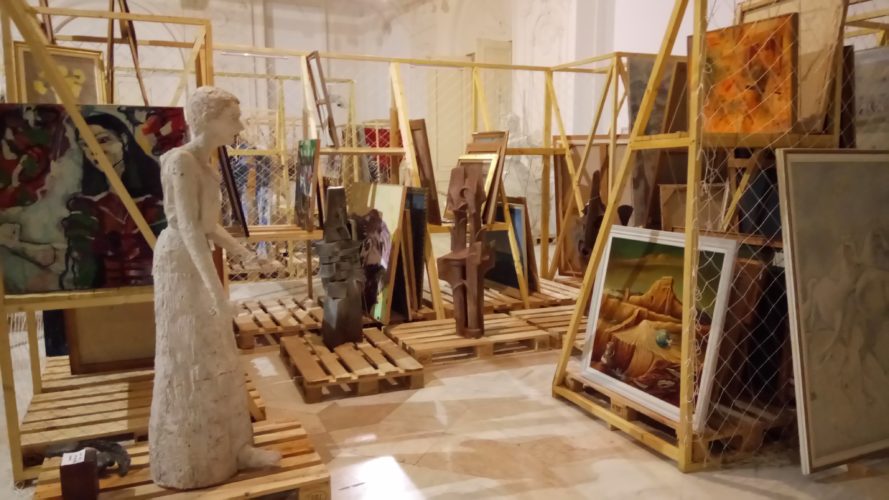
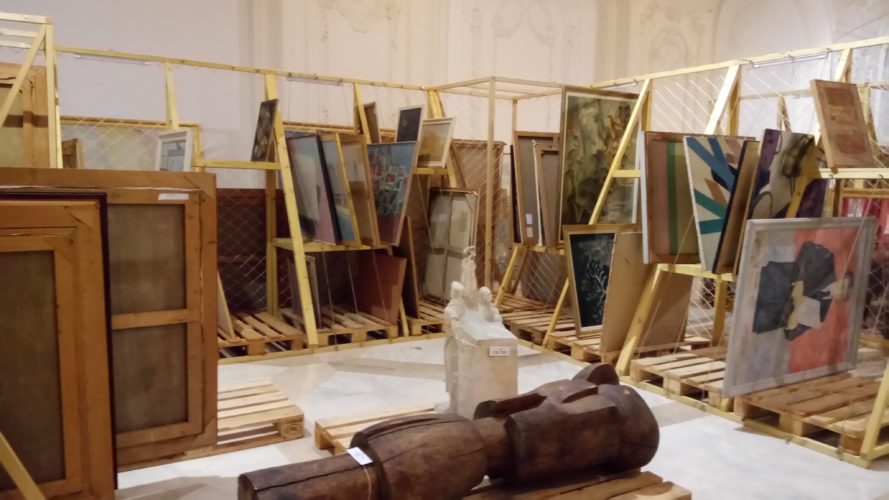
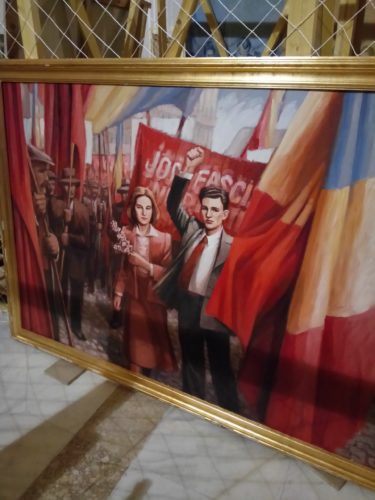
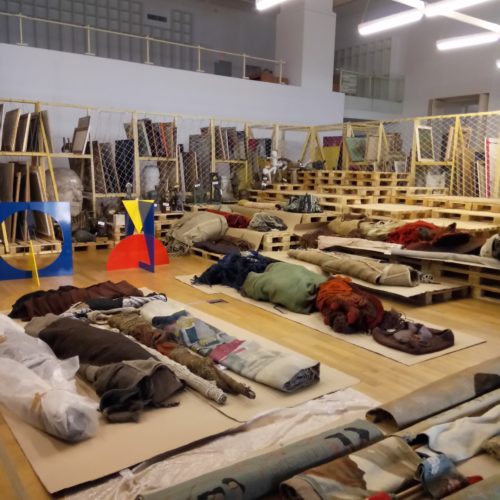
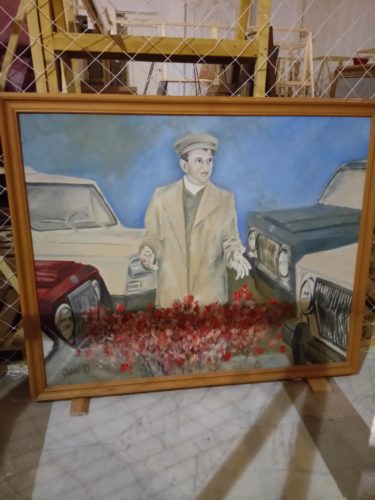
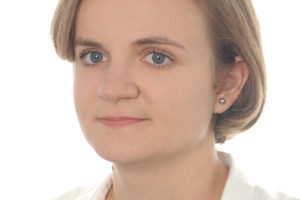
Comments are closed here.